|
HMS
VICTORY model
Acquiring a decent HMS
Victory model nowadays must be quite difficult. Google
the phrase HMS Victory model and numerous web sites
immediately appear. The novice buyers might see some
prices that are hard to resist and then stop the search,
thinking they are getting a treasure deal. But be
forewarned. There are very bad models out there which
are blatantly advertised museum quality. Those models
have fundamental errors. Easiest to spot is the very low
waterline that would make the real ship to capsize in a breeze. These models have boxy
shape, oversized rope, black metal gun port frames and
lids. Their unique features are ridiculous short bow
sprit and horrible boats.
Part of the reasons bad
HMS Victory models get flourished all over the
internet is the artful advertising from third-party
sellers. Their descriptions are full of phrases
like Authentic Design, Artisanal Construction, Exclusive Edition, Limited Edition...
Amazon and Ebay have many of that. A prominent
shop that invests a great deal in advertising but produces a HMS Victory model that has flags flying
opposite to wind direction (unlike motorboats, tall
ships are propelled by wind blowing from behind.) This
shop which emphasizes on machinery prowess and
computer design, makes many grave errors. Their choice of wood is
also questionable, as
the wood grains are too coarse. Another "museum quality"
company shows a model that has pristine white rigging, fake copper
bottom, paper printed windows, undesirable yellow deck,
and very wrong boats.
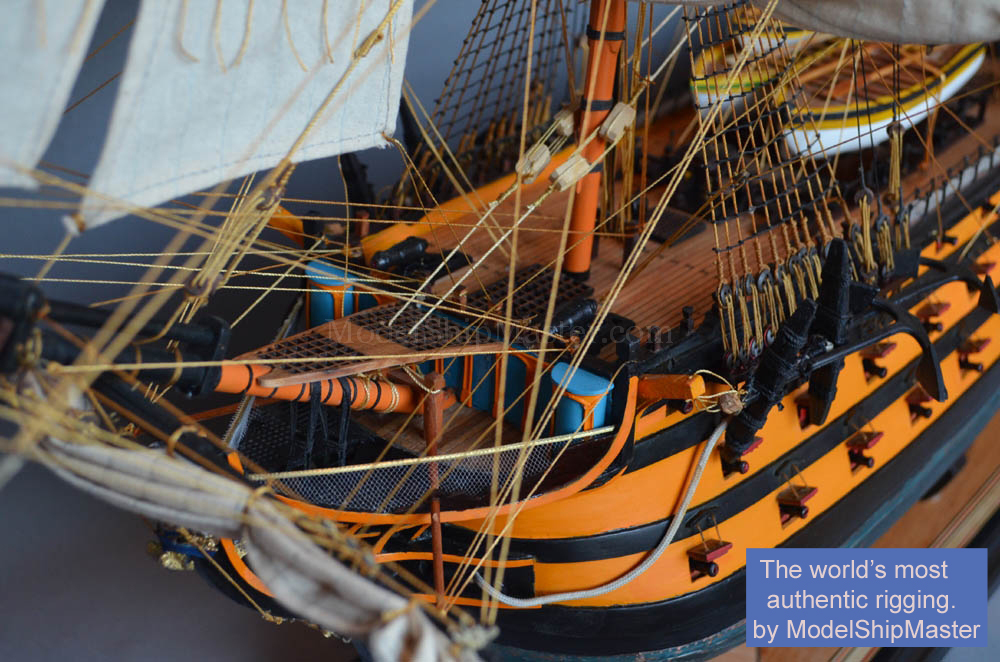
About the construction of
the
HMS Victory
wooden scale model:
-
Construction reference:
The Anatomy
of Nelson's Ships by Charles Longridge, First Rate: The
Greatest Warships of the Age of Sail by Rif Winfield,
Copies of the original ships plans obtained from the
National Maritime Museum, The 100-Gun Ship Victory
(Anatomy of the Ship) by John McKay
- Built from scratch,
Plank-on-frame
construction
-
Copper-plated bottom:
individual copper pieces (no copper color paint on wood, no fake
lines)
-
Under the main deck, all
guns are "real" guns which have proper barrels and
wooden carriages which sit on 2 real decks under the
main deck. These
guns are not simple barrels inserted into a solid hull
like in other models.
- Authentic extensive rigging system comprised of many
different sizes of rope and features numerous blocks and
deadeyes
- Full length masts and bowsprit per original blueprints
- Correct boats. These small boats are not easy to make,
and we make them beautifully. Wooden, not resin casted.
- Beautiful and accurate three-dimensional stern
gallery. It is comprised of numerous pieces, not a flat
piece of prefabricated metal glued on the hull as seen
in many models.
.jpg)
HMS Victory is a
104-gun first-rate ship of the line of the Royal Navy.
She is best known for her role as Lord Nelson's flagship
at the Battle of Trafalgar on 21 October 1805. The
battle
was essential to Britain's continued
superiority on the high seas during the Napoleonic Wars. She was the world's first ship that had
three gun decks.
Her
hull thickness at waterline was astonishing 2 feet. Her
construction took over
6,000 oak trees and
cost 63,176 British pounds—an equivalent to the
cost today of an aircraft carrier.
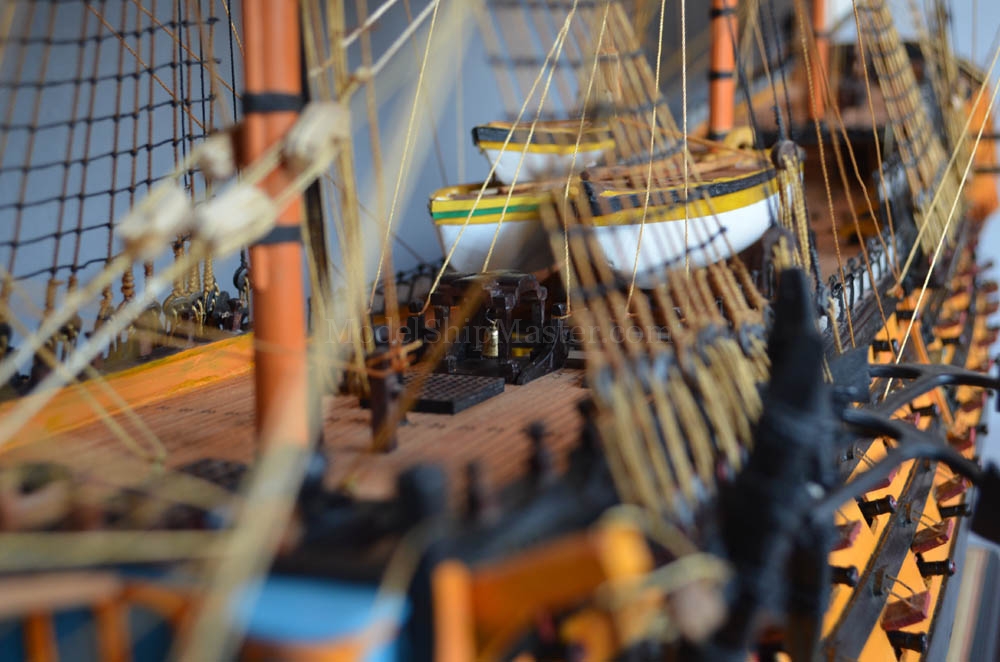
HMS Victory carried the legendary Lord Nelson at the
Battle of Trafalgar.
Until the battle, it had been the custom
for fleets to do battle by sailing past or alongside
each other in two parallel lines. Nelson broke this
tradition by attacking the enemy at right angle,
breaking through the French and Spanish lines and
cutting off their retreat. This aggressive strategy
would forever change the course of naval warfare.
Under Nelsons' strategy, the English fleet, under two
columns, sailed toward the enemy. At about noon, a
French ship started to fire at the HMS Royal Sovereign (lead ship of one of the
columns.) For
the twenty agonizing minutes it took to reach the enemy
lines, Royal Sovereign and HMS Victory endured continuous fire
in silence.
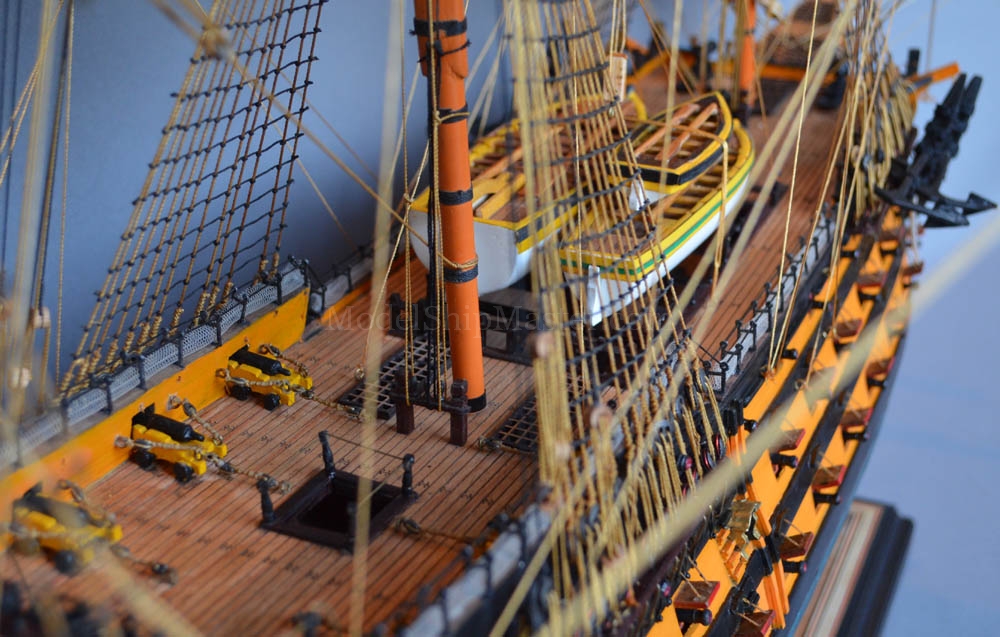
On one column,
HMS
Victory led on, suffering
unrelenting rain of cannon shot. She was searching for the
French admiral’s ship. When seeing the huge Spanish
four-decker Santissima Trinidad, Nelson correctly
assumed that the French admiral’s ship was nearby and
bore down on the Santissima Trinidad. As he was
doing so, the
French flagship
Bucentaure and seven other enemy ships fired on
HMS Victory. By the time she had come close enough to fire
on
the Santissima Trinidad, 50 of her men were dead and 30 wounded.
One the other column, the HMS Royal Sovereign drew astern of the Spanish
three-decker Santa Anna, she raked her decks with a
murderous double-shot volley that put
400 Spanish sailors out of action.
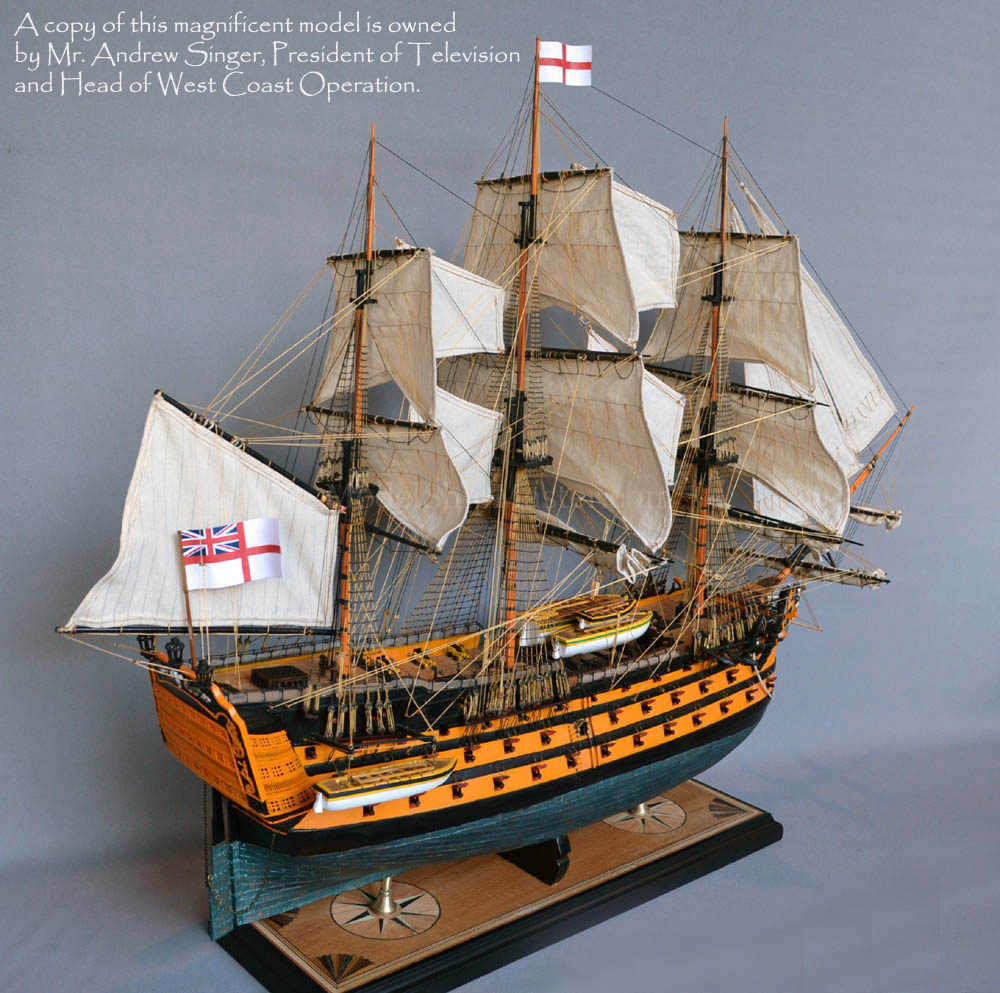
Then HMS Victory collided with the
French Redoubtable. Locked together, the two ships
drifted slowly through the battle. The Redoubtable’s marksmen shot
down 40 British sailors. Seeing the upper deck
populated only by the dead and wounded, the French tried
to board the
HMS
Victory.
HMS
Victory’s botswain’s whistle piped
the tune signifying “boarders; repel boarders,” and the
order immediately summoned swarms of
blue-jackets to the deck, where they killed every enemy
who had managed to board. During this defense that
a a sniper on the mizzen-top of the Redoubtable
aimed his musket at Nelson.
Below decks, Nelsonīs life was ebbing away fast. But he
lived to see Captain Hardy return from the fighting
above to hear the news that fourteen enemy vessels had
been captured. “That’s well,” Nelson said, “but I had
bargained for twenty.”
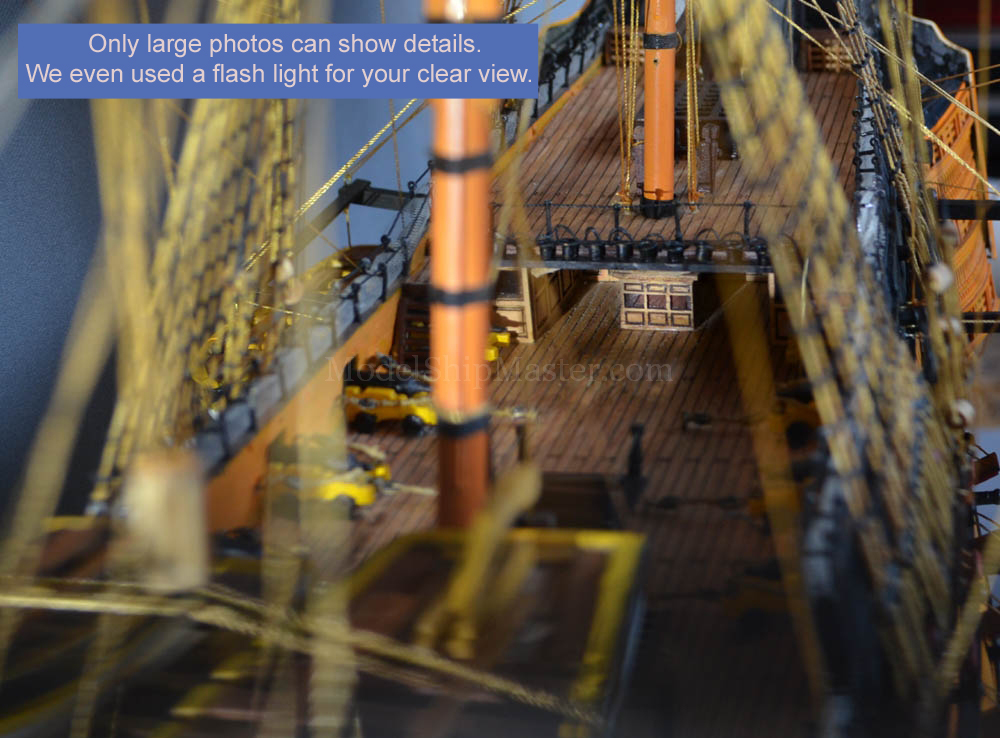
Dimensions of the HMS Victory model: please
click here.
Note:
1/ Model comes with
a regular wood base. The marquetry base costs $500 more
and for the 42" long model only.
2/ Light feature is $300 extra.
Powered by a standard 9v
battery under the base, with on/off switch. Please be sure to tell
us within a week of your order if you want it.
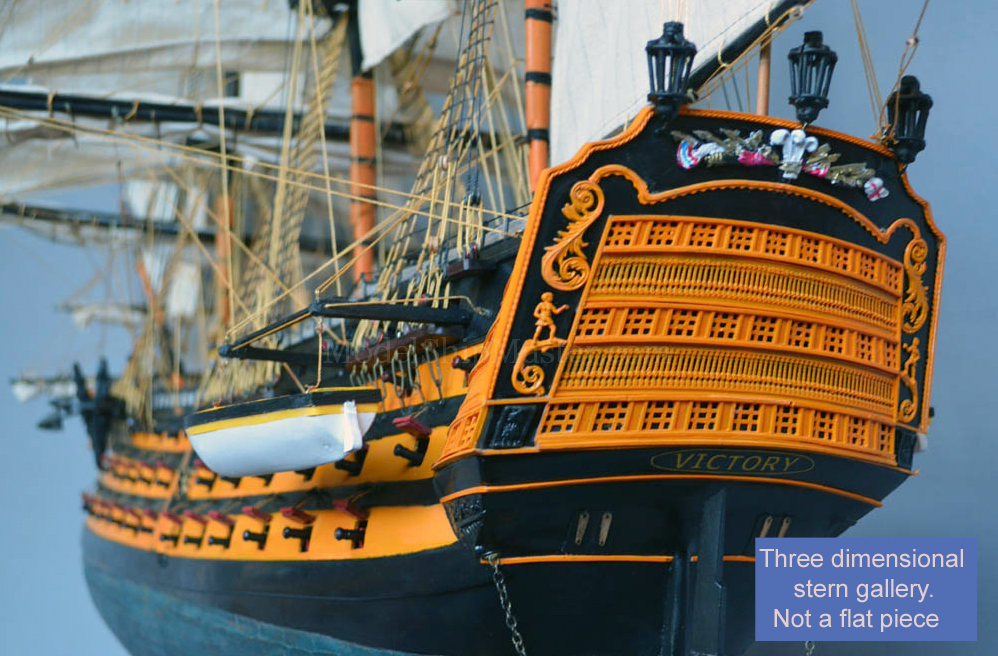
Learn more about the HMS
Victory here:
https://en.wikipedia.org/wiki/HMS_Victory
To learn more about the
accuracy of a HMS Victory model:
https://www.hms-victory.com/
|